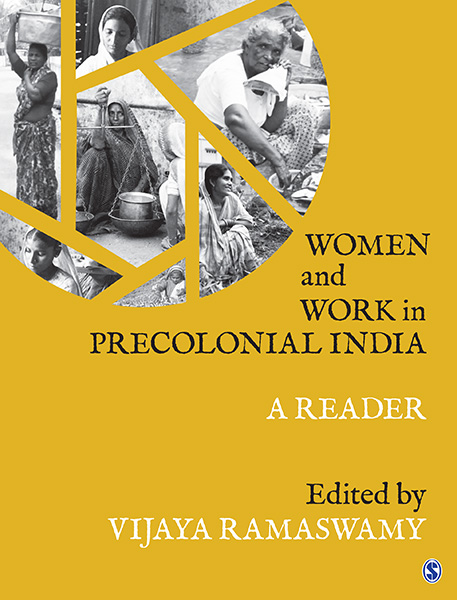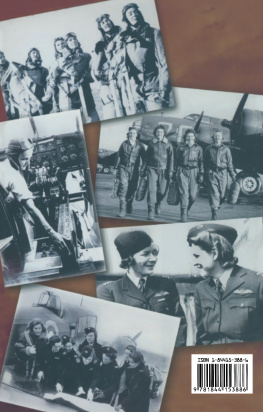
WOMEN
and
WORK in
PRECOLONIAL INDIA
WOMEN
and
WORK in
PRECOLONIAL INDIA
A Reader
Edited by
VIJAYA RAMASWAMY

Copyright Vijaya Ramaswamy, 2016
All rights reserved. No part of this book may be reproduced or utilized in any form or by any means, electronic or mechanical, including photocopying, recording, or by any information storage or retrieval system, without permission in writing from the publisher.
First published in 2016 by

SAGE Publication India Pvt Ltd
B1/I-1 Mohan Cooperative Industrial Area
Mathura Road, New Delhi 110 044, India
www.sagepub.in
SAGE Publications Inc
2455 Teller Road
Thousand Oaks, California 91320, USA
SAGE Publications Ltd
1 Olivers Yard, 55 City Road
London EC1Y 1SP, United Kingdom
SAGE Publications Asia-Pacific Pte Ltd
3 Church Street
#10-04 Samsung Hub
Singapore 049483
Published by Vivek Mehra for SAGE Publications India Pvt Ltd, typeset in 10.5/12.5 pt Times New Roman by Zaza Eunice, Hosur, Tamil Nadu, India, and printed at Chaman Enterprises, New Delhi.
Library of Congress Cataloging-in-Publication Data Available
ISBN: 978-93-515-0741-3 (PB)
SAGE Team: Shambhu Sahu, Sanghamitra Patowary, Megha Dabral and Ritu Chopra
This is for
My Sisters:
Lalita, Tara and Padmini
We had joy, we had fun,
we had seasons in the sun
and
For Geeta, Raji and Jaya
My Sisters by Marriage
for the love and acceptance I have received.
Thank you for choosing a SAGE product!
If you have any comment, observation or feedback,
I would like to personally hear from you.
Please write to me at
Vivek Mehra , Managing Director and CEO, SAGE India.
Bulk Sales
SAGE India offers special discounts
for purchase of books in bulk.
We also make available special imprints
and excerpts from our books on demand.
For orders and enquiries, write to us at
Marketing Department
SAGE Publications India Pvt Ltd
B1/I-1, Mohan Cooperative Industrial Area
Mathura Road, Post Bag 7
New Delhi 110044, India
E-mail us at
Get to know more about SAGE ,
Be invited to SAGE events, get on our mailing list.
Write today to
This book is also available as an e-book.

Contents
Vijaya Ramaswamy
Julia Leslie
T. R. Sharma
M. A. Indra
Sukumari Bhattacharji
Kavita Gaur
Vijaya Ramaswamy
Jaya Tyagi
I. B. Horner
Uma Chakravarti
Upasana Dhankhar
Anant Sadashiv Altekar
Anant Sadashiv Altekar
M. A. Indra
N. N. Bhattacharyya
Kanakalatha Mukund
A. Padma
Vijaya Ramaswamy
A. Padma
Anna Varghese
Uma Chakravarti
Shireen Moosvi
Vatsyayana Mallanaga
Leslie Orr
Shalini Shah
Sukumari Bhattacharji
It is with some hesitation that I write this Foreword. Firstly, because I am not a scholar of ancient and medieval India with which this volume is largely concerned and secondly, because I am not a labour historian. I agreed to write at the insistence of Professor Vijaya Ramaswamy for whose scholarship and dedication to her work, I have the greatest admiration and respect. She asked me perhaps because I have worked extensively in the area of womens history, but of colonial and contemporary India.
The majority of women in every country and in all ages have usually been workers. Their participation as workers has always been necessary for social and economic development. In all societies, they are usually involved in household activities such as child rearing, cooking, cleaning, fetching water and fuel and care of the elderly and sick. This kind of work is not recognised as work but as a womans duty. Women have worked outside the home as well, especially in the domain of craft work and labour. Womens participation as workers in the public sphere increased in Europe and Great Britain after World Wars I and II when men were fighting and women had to work in factories and offices.
In India, with womens participation in the freedom struggle and growing womens education and awareness, women started emerging out of the kitchen and began to take their place alongside men as supplementary breadwinners. Today, women can be seen as doctors, lawyers, journalists, architects, in the media and in almost every profession. However, as wage earners or self-employed entrepreneurs, they continue to be responsible for their domestic duties. Thus, women bear a double burden, unless they are affluent and can afford domestic help. They have to balance their jobs with looking after the children and other housework. Therefore, women suffer from a sense of guilt about their inability to do adequate justice to either their jobs or their duty as homemakers.
The 1980s and 1990s were the decades of great creativity in Indian labour history. Study of labour moved from trade unions to a study of workers themselves. The growing interest in labour history led to the first conference devoted to Indian labour history at the International Institute of Social History in Amsterdam in 1995 and the founding of the Association of Indian Labour Historians in the following year. The dynamism of the intellectual horizons of Indian labour history in that period is captured in the work of three labour historiansRaj Chandavarkar, Dipesh Chakravarti and Chitra Joshi.
In the majority of labour histories, however, till a few decades ago, the presence of women in the domestic or public domain as workers was missing. Their contribution to the household income or the overall economy was absent. Women were represented either as good wives or prostitutes. In more recent times, we have had feminist historians such as Samita Sen, Tanika Sarkar, Chitra Joshi, Bina Agarwal, Jayati Sen, Devaki Jain, Radha Kumar and others who have focused on womens labour.
Womens work when outside the home was sporadic, ill-paid and mostly in the unorganised sector. Even today, 94 per cent of Indian women work in the unorganised sector. Men were regarded as producers, as breadwinners and women as consumers. Men performed work outside the house which was more hazardous, since it was believed that outside work required physical strength. Mens work was considered to be the opposite of womens work.
This volume is a scholarly study of womens unrecorded presence in the household economy as well in the wider production process. It covers a vast historical span and links the theme of woman and work from ancient to late medieval India. It stops at the beginning of colonial rule in Indian history, as feminist economic historians have worked on this theme.
This anthology is perhaps the first of its kind in mapping ways of looking at women and work in precolonial India through essays by distinguished scholars drawing on a variety of sources such as the Upanishads, Arthashastra and other epigraphical records as well as literary works and canonical texts. It deals with themes such as changing production role of Tamil women from tribe to caste, womens property rights in ancient and medieval India, devadasis and prostitution in precolonial India and various other issues.
The volume provides a panoramic survey of women and work in precolonial India. The authors have salvaged available data on womens paid and unpaid, visible and invisible in order to highlight their contribution work to the economy.










